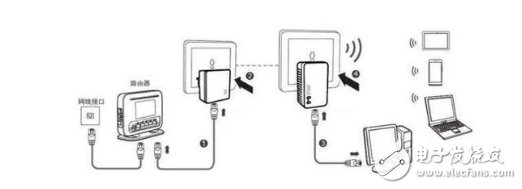Since United Technologies acquired the avionics and interiors business for $23 billion, it has become one of the largest global suppliers of avionics components. To address the issue of limited charging stations in airport lounges, airlines have started implementing Qualcomm's dual-channel WiFi technology. This solution not only expands coverage but also enhances network capacity, ensuring passengers enjoy fast and stable WiFi access even in areas like the lounge, restroom, or retail shops.
Many people may wonder why public WiFi at airports—despite their vast size and high number of connected devices—still delivers excellent performance, while home WiFi often struggles with poor coverage. The answer lies in advanced technologies like MU-MIMO and AC+AP setups, which help manage congestion and improve signal reach. However, these solutions are typically too large and power-hungry for residential use.
Home WiFi signal is weak? Here’s how to fix it
Most airports today rely on AC+AP networks, where an AC (wireless controller) works with multiple APs (access points) to provide seamless coverage. While effective, this setup requires bulky hardware and high power consumption, making it unsuitable for home environments.

For home users, common solutions like using multiple routers or powerline adapters often come with drawbacks. Multi-router bridging can slow down speeds and cause instability, while powerline adapters require good wiring and are sensitive to electrical conditions, limiting their effectiveness.
Is there a simpler way? Yes—Qualcomm’s dual-channel WiFi technology offers a one-step solution that improves coverage without the hassle of extra devices.

To understand how powerful dual-channel WiFi is, let’s first look at what single-channel WiFi means. Traditional single-channel (1x1) WiFi uses one antenna for both sending and receiving data, meaning it can only operate on a single channel at a time.
Imagine data as a truck traveling on a two-lane road. In a single-lane setup, traffic jams and obstacles like walls or other devices can create “WiFi dead zones.†But with dual-channel (2x2) WiFi, two lanes are added, allowing more data to flow simultaneously and improving speed and coverage. This reduces interference and ensures better signal strength in hard-to-reach areas of your home.
In lab tests, Qualcomm’s dual-channel WiFi can deliver up to twice the throughput of single-channel WiFi. A router equipped with this technology can cover every corner of your house—kitchen, bathroom, bedroom—without the need for complex setups like multiple routers or powerline adapters. Plus, it can reduce device power consumption by up to 30%, extending battery life on smartphones and tablets.
With Qualcomm’s dual-channel WiFi, your phone and tablet will last longer, and you’ll be able to stream HD videos from any room—no lag, no buffering!
Currently, many popular smartphones support Qualcomm’s dual-channel WiFi technology, including models like the OPPO R11, vivo X20, Xiaomi 6, Xiaomi MIX2, and OnePlus 5. As this technology becomes more widespread and the Snapdragon platform gains popularity, more users will experience its benefits in daily life.
Guangzhou Yunge Tianhong Electronic Technology Co., Ltd , http://www.e-cigaretteyfactory.com